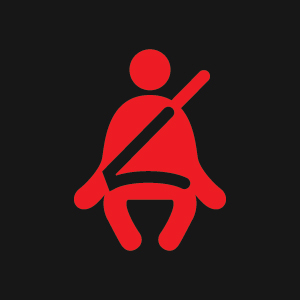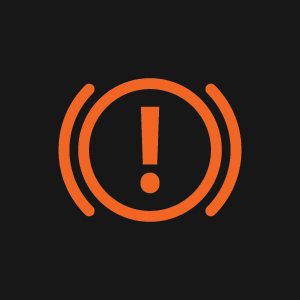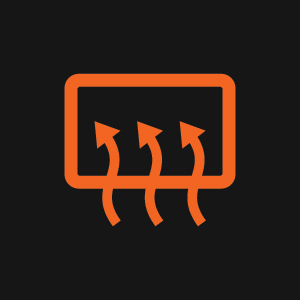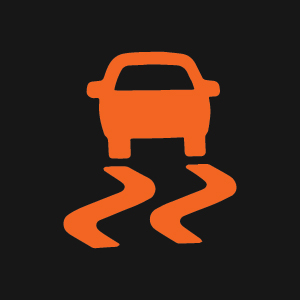Home / Blog
Dashboard Warning Lights
9 Aug 2017

Understanding what they mean and how to act. Note:
different car model may have different types of lights. In this
article we'ra trying to explain common dashboard lights and their meaning.
Rear Fog Light — it is activated and remains on once the driver
turns on the fog beams.
Seat Belt Reminder — active as long as vehicle is moving and the
belt remains unfastened. Fastening seat belt will switch off the light.
Brake System Alert — this light indicates a low brake fluid level
and professional help should be sought to rectify and issues, leaks or low
brake linings are a common cause, this light is sometimes used when a
vehicle has an ABS fault.
Temperature Warning Light — it warns the driver of the possibility
of engine overheating and usually demands the driver to stop the vehicle.
Front Airbag — amber light informs the driver when a passenger air
bag has been switched off manually.
Battery Warning — seek professional help to resolve the issue.
Open Doors Indicator — this symbol is usually turned on just after
the driver starts the engine and informs them that one or more doors are
closed incorrectly. Safely check all doors are shut properly.
Hazard Warning Lights — activated by the driver to indicate a
problem with their car to other motorists.
Oil Pressure Warning — this light will illuminate when the oil
pressure sensor detects low oil pressure, the vehicle’s engine should be
switched off immediately to avoid severe engine damage and the oil level
checked to ensure correct quantity in the engine. Professional help should
be sought if oil level is correct and light continues to show. An amber
light is also used in some vehicles to warn when the oil level is getting
low and top up is required.
ABS Warning Light — this light will show when you have a fault in
the ABS braking system, this will not result in losing your brakes but
additional safety features will have been switched off and professional
help should be sought to resolve the issues. Note: The light illuminates
briefly on engine start up but switches off automatically.
Engine Management Light — this light illuminates when the vehicle
detects a fault with the engine management system usually related to
emissions or running concerns. Can cause the vehicle to go in to limp home
mode when illuminated and requires immediate professional attention.
Warning Light this light will illuminate with other lights and is usually
accompanied by an error message in the display.
Tyre Pressure monitor — inflate tires to correct pressure displayed
in owners manual and reset light if required to extinguish.
Bulb Failure — indicates a problem with one or more of the vehicle
bulbs. Seek guidance from a motor electrician.
Rear Window Defrost — this is turned on once the driver presses the
rear window defrost button. When window is clear turn off to save on
battery consumption.
Child Safety Lock — if alight, the symbol shows you that the child
safety lock has been activated. Remember to switch off when no longer
required.
Cruise Control — this light turned on if the cruise control system
is activated; note that it may differ by brand and car model.
Windshield defrost — activated by the driver to clear the front
windscreen. When windshield is clear switch off to save on battery
consumption.
Powertrain Malfunction — this light will illuminate when the engine
management system detects a fault that requires the engine to be shut down
and requires immediate attention by a qualified technician.
Traction Control Light — this light will illuminate along with the
ABS light when the vehicle has a fault in the system. It will also flash
when the system is operating to warn the driver of hazardous conditions.
Electronic Throttle Control Light — briefly enabled when the driver
starts the engine, the indicator shows a malfunction in the Electronic
Throttle Control system.
AWD — this light indicates that the All Wheel Drive system is
activated.
ESP/BAS Light — similar to the ABS indicator, but especially
installed to inform the driver about a potential problem with the
Electronic Stability Program technology.
Overdrive Indicator — it shows the driver that the overdrive system
has been turned off.
Low Fuel Notification — this panel is switched on if the fuel level
gets very low. Refuelling is urgently required.
Glow Plug Warning — used on Diesel vehicles, no attempt to start the
vehicle must be made until the light is extinguished. The light is also
used to with the engine management light when a fault has been detected.
Turn Signals — without a doubt the most known instrument panels, the
turn signals are activated once the driver changes direction and uses the
indicators.
High Beam Light — it is turned on once the driver activates the high
beam mode of the headlights.
Now you have major understanding what is your dashboard light means. At the
BMP Autoservice we are ctearly understand how unexpected and frustrating some
of your car's issues might be and we are ready to help you with comprehensive
and professional aproach to keep your car well maintained and whealthy. If you
got some of your warning light on at your instrument cluster, don't ignore it!
Professional sought might be require. Feel free to call us at 916-334-7371 or
visit our shop, conviniently located at 7275 32nd Street, North Highlands, CA
95660.
Drive safe!
Sincerely yours,
Anatoliy Rachinskiy,
BMP Autoservice CEO.





























